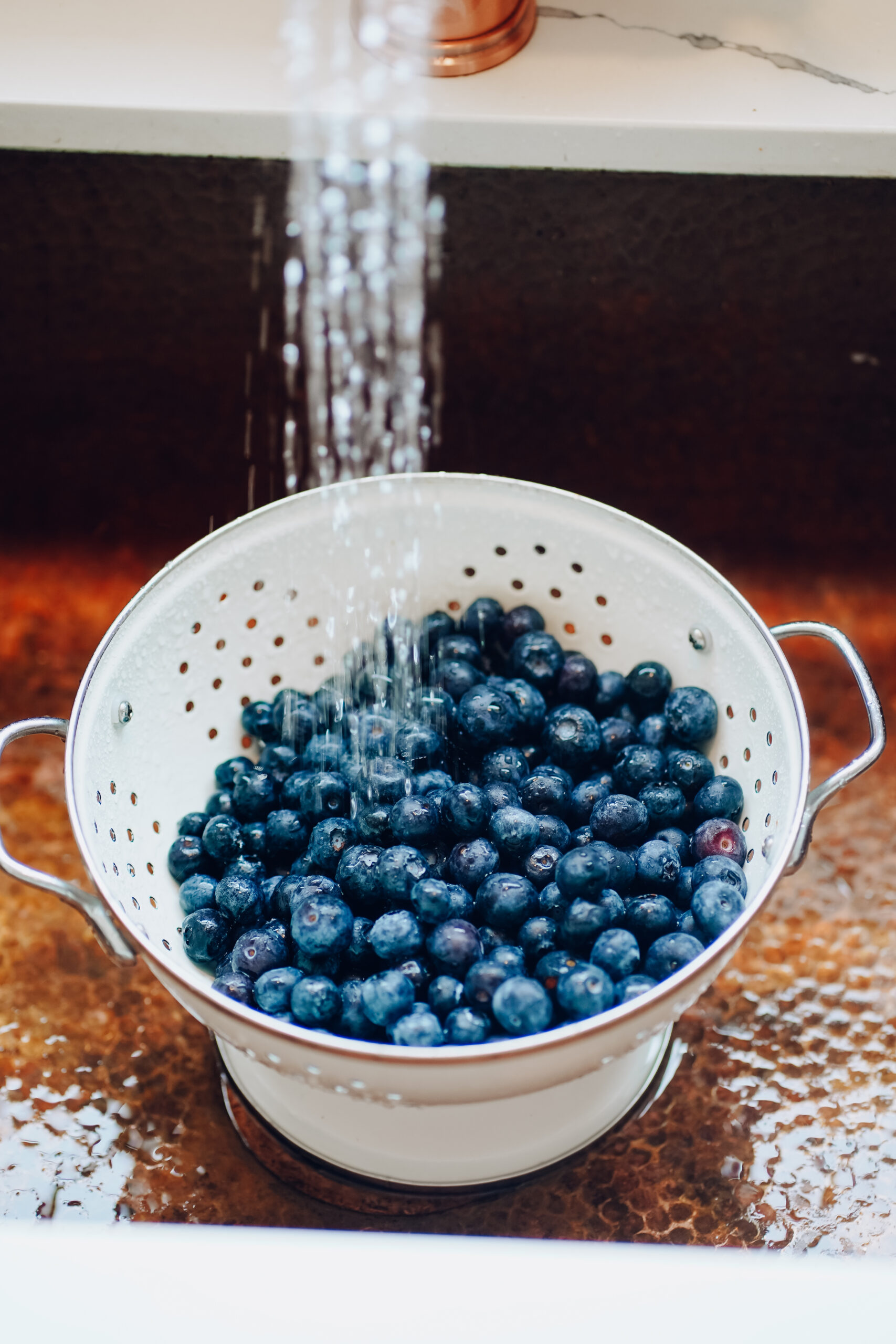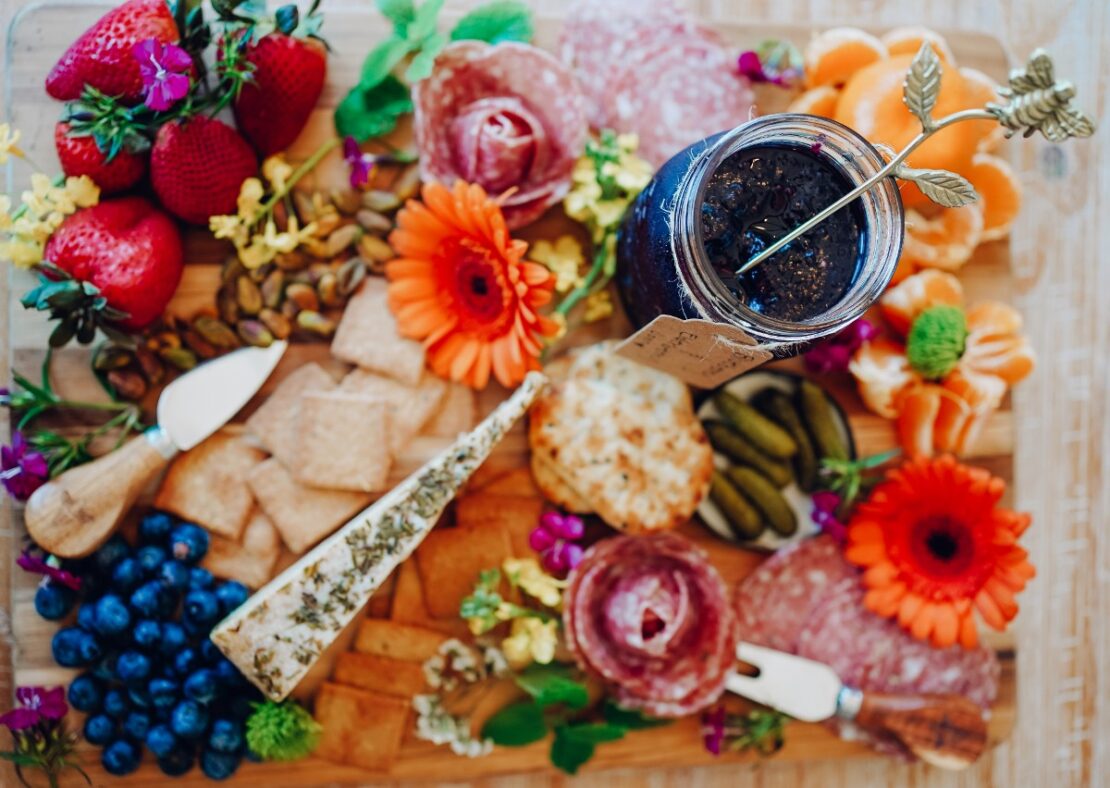
Delicious Elderberry and Blueberry Jam With No Pectin
Who’s ready for a burst of berry botanical flavor? Warmer days call for a special picnic companion—homemade jam. You can spread this blueberry and elderberry jam on toast, crackers, bagels, or waffles—the possibilities are infinite. What’s even better than a homemade jam? One that you can make without needing pectin, and one that is free of refined sugar, plus loaded with yummy health benefits. Get ready to make some blueberry and elderberry jam!
Berry Superfoods
Blueberries
Most of us have heard the term “superfood,” or perhaps even use the term ourselves, but what exactly does it mean? By definition, a superfood is a nutrient-rich food considered to be especially beneficial for health and wellbeing. Blueberries, for instance, are often referred to as a “superfood.” Here’s how blueberries fit the bill, thus being given that badge of honor: blueberries have some of the highest antioxidants of any fruit (Wolfe et al., 2008). They contain anti-inflammatory phytochemicals, specifically anthocyanin. Studies have shown that eating a regular consumption of blueberries correlates to a reduced risk of cardiovascular disease, type 2 diabetes, improved neuroprotection, and even weight maintenance, all traceable back to the consumption of anthocyanin (Kalt et al., 2020). However, it doesn’t stop there. Blueberries are also a good source of a variety of minerals and vitamins, such as vitamin K, which aids in bone health; vitamin C, which aids in immune function; and manganese, which is needed for protein and carbohydrate metabolism. In addition, blueberries contain small amounts of vitamin E, vitamin B6, and copper (Palsdottir, 2020). High fiber, low calorie, nutrient-packed, and sweet, what more could you ask for in a fruit?
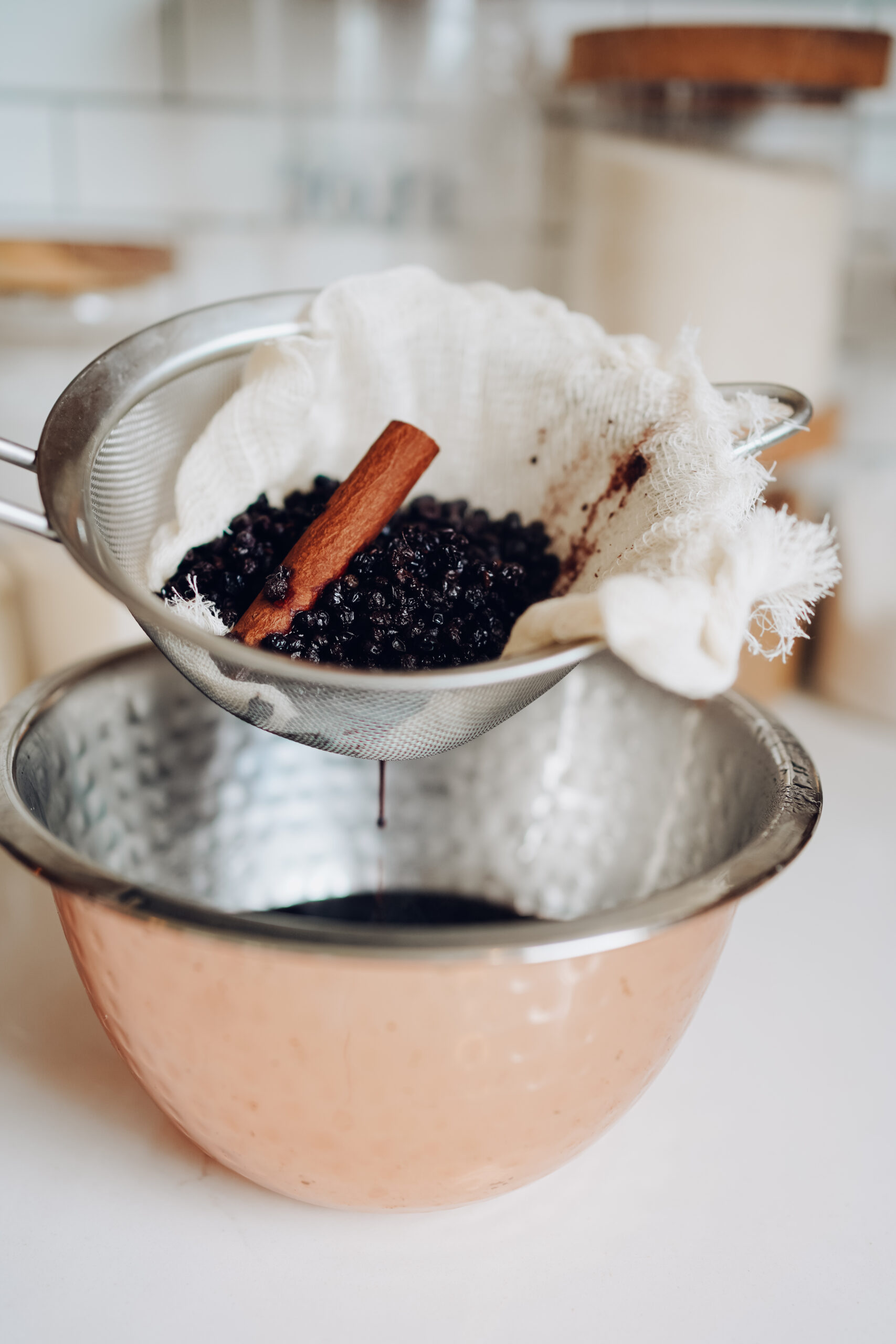
Elderberries
If there was a spokesperson for herbalism, arguably, elderberry (Sambucus nigra or S. canadensis) could be it! Crossing over from herbalism to a mainstream staple, they are found more and more in health and wellness products, such as cough syrups and throat drops that are carried in conventional grocery stores and pharmacies. Elderberry products have become a household go-to for many, and rightfully so. This berry is high on the “superfood” list, but more commonly employed as an herb rather than a food. The berry contains flavonoids such as quercetin and, like the blueberry, anthocyanins (Elderberry, 2006). Scientific research shows promising indications that compounds found in elderberries provide antioxidant, anti-inflammatory, anticancer, anti-influenza, antimicrobial, antidiabetic, cardiovascular protective, and neuroprotective activities (Liu et al., 2022). Whew! If that isn’t a “superfood,” I don’t know what is. Plus, they have nutritional benefits as well. They are high in vitamin C and fiber, helping you to get to your daily value (Mandl, 2018). If you weren’t an elderberry fan before, I bet you will be now!
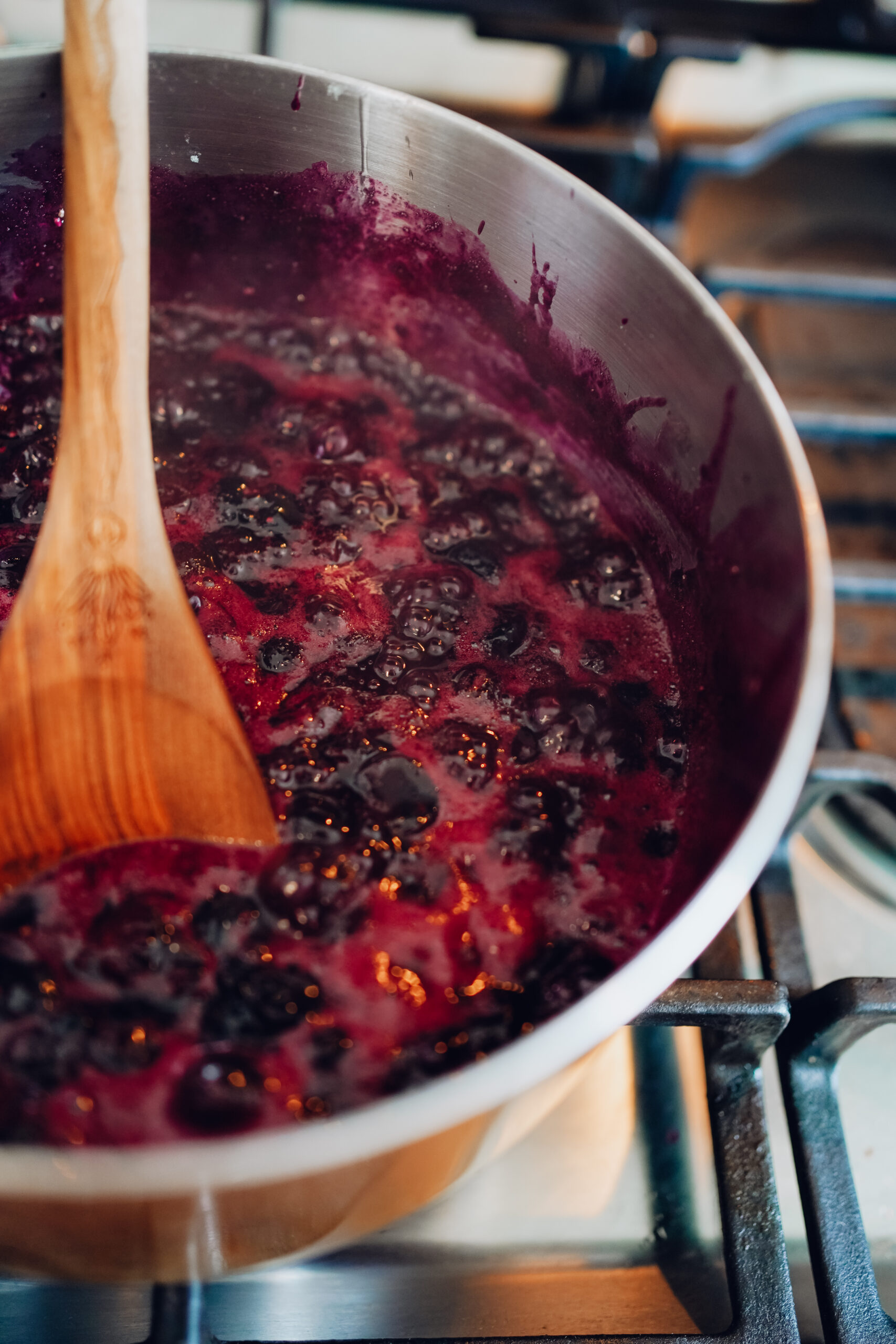
Time For A Super Mashup
Now let’s put these two superfoods together! Pulling in the fruity flavor of the blueberry and the unique tart, subtle sweetness of the elderberry makes for a well-balanced jam. Not to mention, we also are adding in raw honey, chia seeds, and lemon. What a lineup!
If you’ve made jam before, you’ll know there are quite a few methods to achieve the spreadable goodness. To do this, we are first opting not to use pectin. Pectin is a natural thickener, specifically, a soluble gelatinous polysaccharide that is found in ripe fruits and extracted for use as a setting agent. Although natural, it is still a highly processed ingredient that you can make an easy swap for–chia seeds! That’s right, those tiny seeds you might sprinkle on your yogurt or muffin are a great addition to homemade jams. Helping to thicken the consistency and provide some benefits of their own, chia seeds aid in digestion through soluble dietary fiber and are also a good source of the polyunsaturated fatty acids omega-3 and omega-6.
Secondly, most jam recipes call for cups of refined sugar, which many of us wish to avoid. While sugar may have its place in culinary recipes, for this herbal spin on jam, we will use an alternative–honey. Even though we lose some of the health benefits when heating the honey, in this recipe, we are mainly pulling in honey’s natural sweetness to enhance our jam recipe.
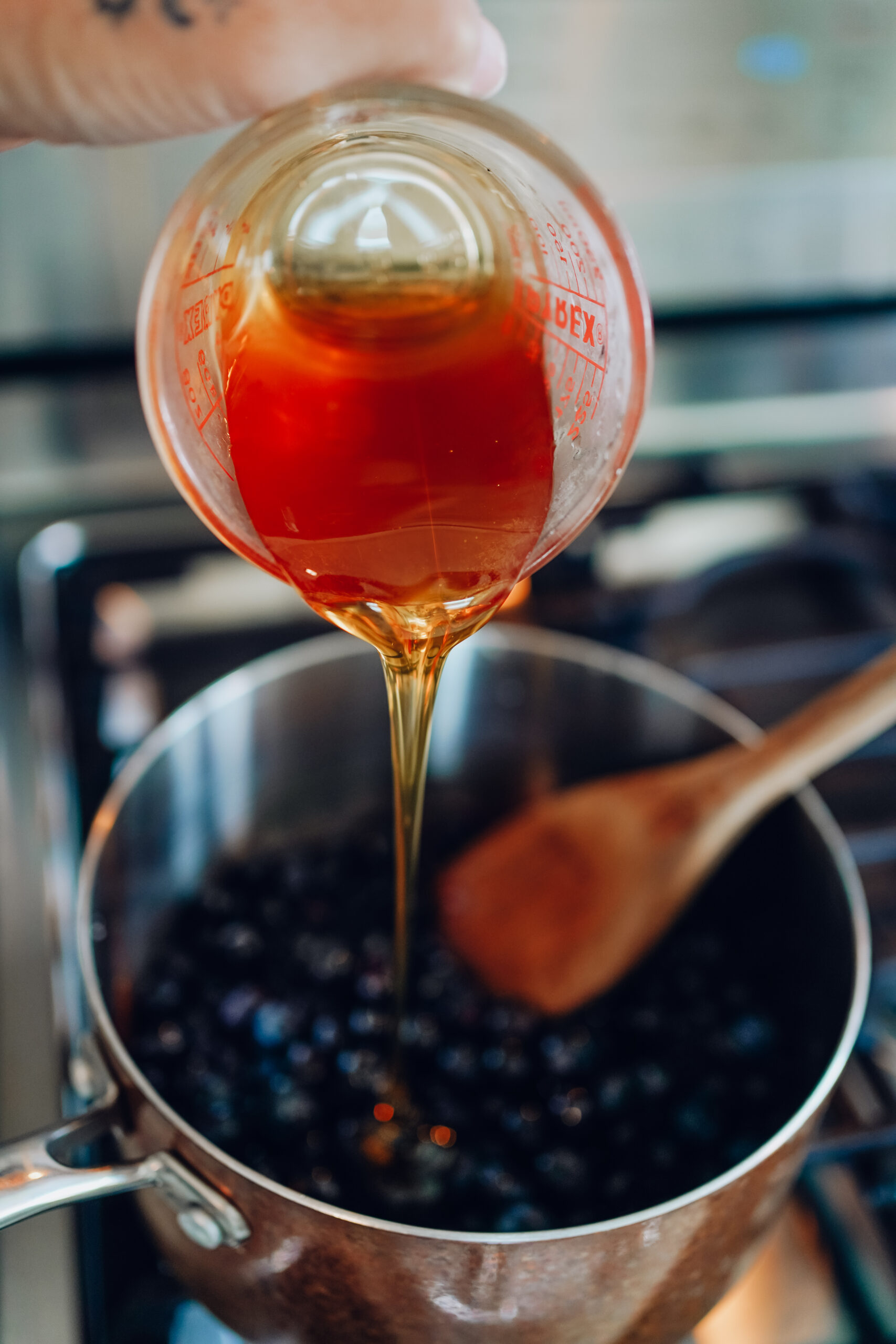
The Jam Process
Much like any recipe you come across, there’s always more than one way to go about it. This one in particular uses a two-step approach, for which you can use fresh or dried elderberries. We will first create a strong elderberry syrup to use in our jam (dried elderberries are used in this recipe, which makes it possible to make any time of year).
After the elderberry syrup is made, we will then be making the jam. You’ll be glad to know that it is an easy process that doesn’t take long to make; just a few supplies, and you’ll be on your way to homemade jam.
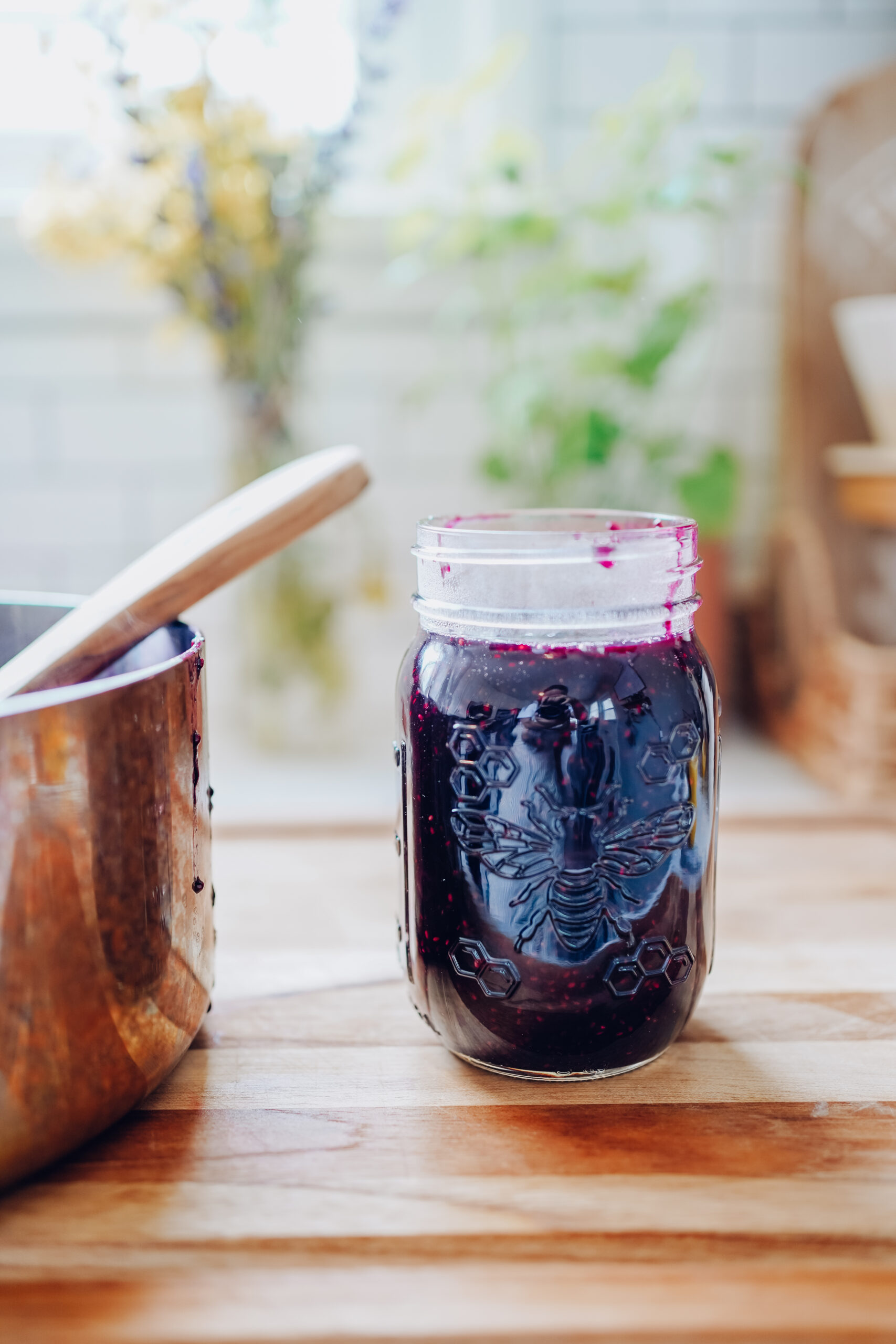
How to Make Small Batch Elderberry and Blueberry Jam
Elderberry and Blueberry Jam With No Pectin
Delightfully sweet, loaded with vitamins, minerals, and more, this superfood mashup will be your new favorite spreadable, edible herbal treat!
Elderberry syrup
½ cup dried elderberries (Sambucus nigra or S. canadensis)
2 cups spring water
3 clove (Syzygium aromaticum) buds
1 cinnamon (Cinnamomum spp.) bark stick
1 cup raw honey
Jam
4 cups fresh blueberries
½ cup elderberry syrup
1 tablespoon lemon juice
3 tablespoons chia seeds
½ cup raw honey
- Start by washing the blueberries and setting aside.
- Next, make the elderberry syrup.
- In a pot, add in elderberries, water, cloves, and cinnamon stick. Simmer, covered for 30 minutes. Strain through cheesecloth and fine-mesh strainer. You should have above 1 cup of syrup after straining. Measure remaining liquid, then add equal parts honey and mix well. Reserve ½ cup of elderberry syrup for the jam recipe. Store the remaining syrup in the refrigerator, where it will last for several weeks.
- Next, make the jam by adding blueberries to a large pot. Mash them with either the back of a spoon or a potato masher.
- Add elderberry syrup, lemon juice, and honey to the blueberries.
- Bring the pot to a boil, stirring frequently to avoid scorching. Once your jam is at a rolling boil for a minute or two, turn heat to low.
- Add in chia seeds and allow to cook in the pot for an additional 20 minutes, stirring occasionally.
- Once your jam has thickened, remove the pan from heat and allow it to cool slightly.
- Spoon your jam into a mason jar and store in the refrigerator.
- This homemade jam will last about one month.
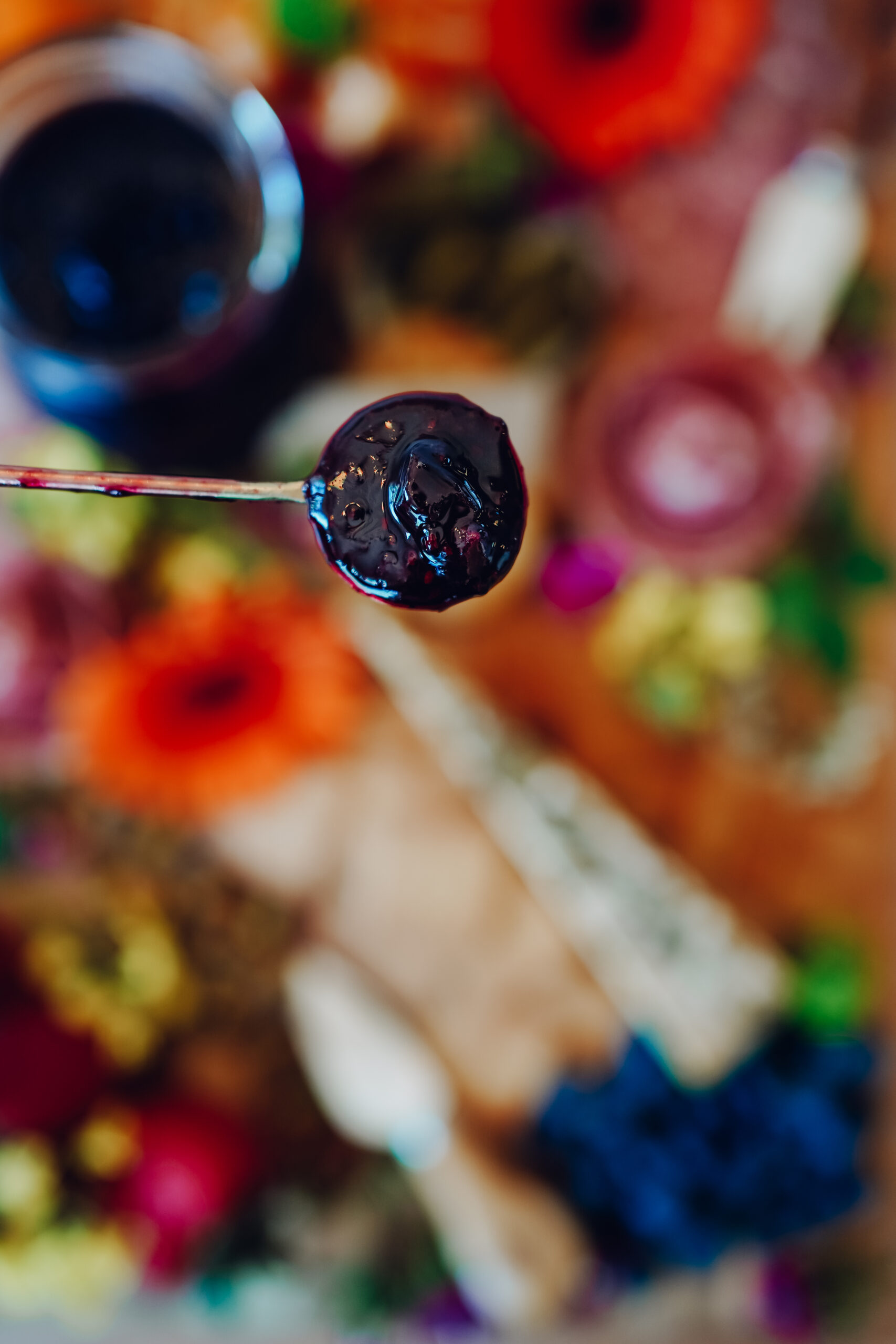
In Closing,
As a super delicious superfood, elderberry and blueberry jam is a great herbal recipe to try. Any time we can mash up the benefits of herbal offerings with our everyday food, the result is always well worth the time to make it yourself. Our elders had it right, right? Food made from scratch from the earth to nourish your body will never go out of style!
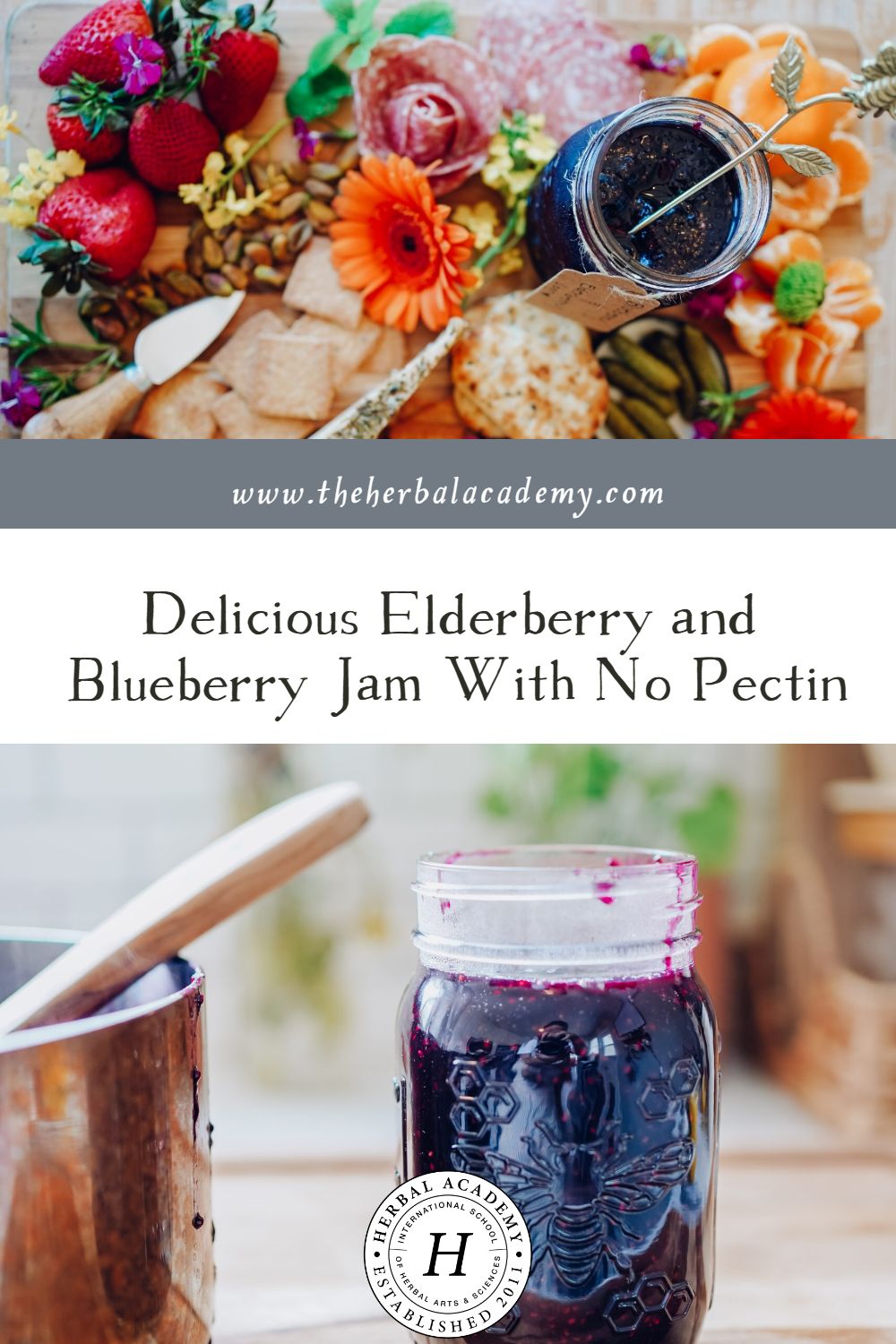
REFERENCES
Elderberry. (2021, June 21). PubMed, National Library of Medicine. Retrieved June 17, 2023, from pubmed.ncbi.nlm.nih.gov/30000895/
Kalt, W., Cassidy, A., Howard, L. R., Krikorian, R., Stull, F., & Zamora-Ros, R. (2019). Recent research on the health benefits of blueberries and their anthocyanins. Advances in Nutrition, 11(2). https://doi.org/10.1093/advances/nmz065
Liu, D., He, X.-Q., Wu, D.-T., Li, H.-B., Feng, Y.-B., & Gan, R.-Y. (2022). Elderberry (Sambucus nigra L.): Bioactive Compounds, Health Functions, and Applications. Journal of Agricultural and Food Chemistry, 70(14), 4202–4220. https://doi.org/10.1021/acs.jafc.2c00010
Mandl, E. (2018, March 8). Elderberry: Benefits and Dangers. Healthline; Healthline Media. https://www.healthline.com/nutrition/elderberry
Palsdottir, H. (2020, February 20). Blueberries 101: Nutrition Facts and Health Benefits. Healthline. https://www.healthline.com/nutrition/foods/blueberries
Wolfe, K., Kang, X., He, X., Dong, M., Zhang, Q., & Liu, R.H. (2008). Cellular antioxidant activity of common fruits. Journal of Agricultural and Food Chemistry, 56,18. https://doi.org/10.1021/jf801381y

